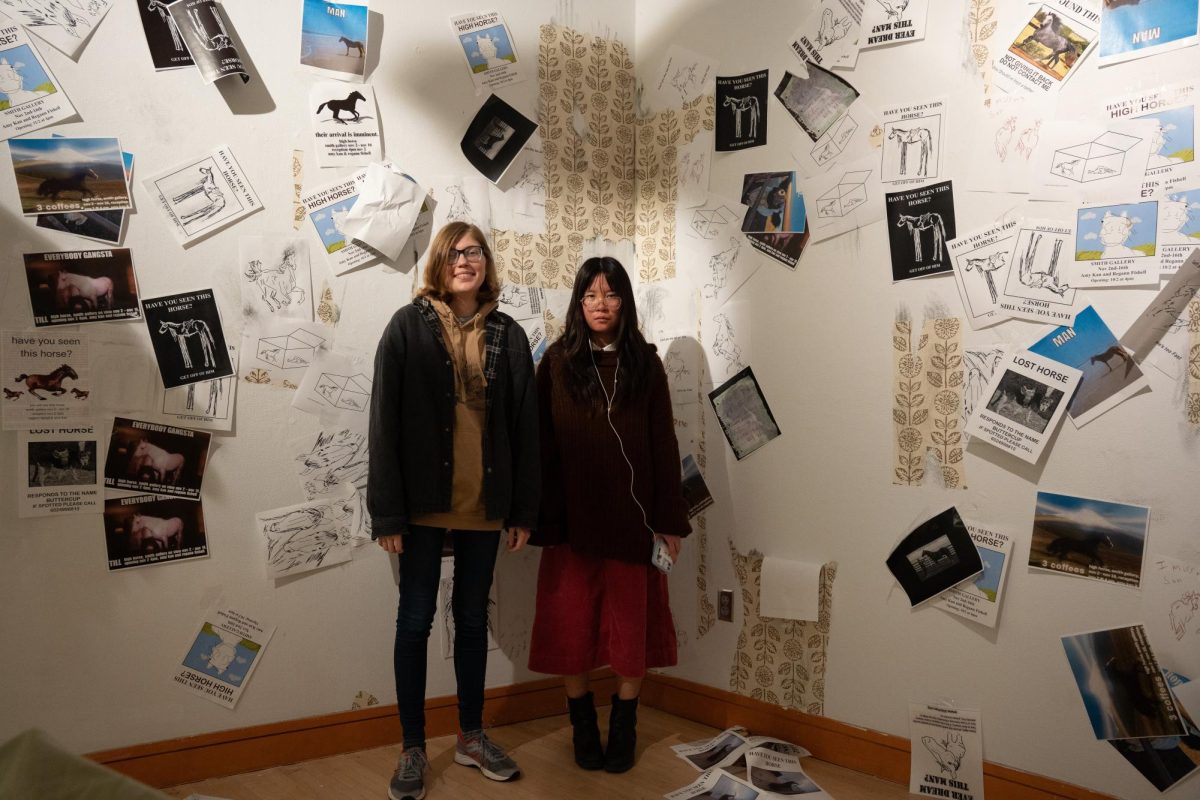Last December, several students, faculty and staff encountered seemingly impromptu dance performances across the Grinnell Campus. No, it was not a spontaneous flash rave, and yes, they had the space reserved—even in Steiner.
Sight-specific dance—in which a dance performance is shaped and molded by the often untraditional place in which it happens—is no new idea for Grinnell. Last semester, several students involved in the College’s dance troupe, a for-credit ensemble that performs every semester, helped organize, choreograph and perform several pieces that took place across campus in locations from the hallways of Bucksbaum to the second floor of Steiner. This semester, though, faculty members will be taking charge and institutionalizing the style.
“Last semester the students in dance troupe created sight dances and some of them collaborated amongst each other, some invited students into the works they created,” Shawn Womack, Theater, said. “And this semester, as with every spring semester, we have faculty and guest choreographers.”
Womack will be joined by Kathleen Hurley, who teaches a dance technique class, and architect and visual artist Mitchell Squire, a professor of Architecture at Iowa State University. Hurley and Squire will collaborate directly with students to compose a series of sight-specific dances.
“We haven’t completely composed it yet because we want to have a lot of student input into the creative process,” Hurley said. “But we’re picturing that it will be kind of an epic piece that will travel across campus to different buildings.”
Squire visited Grinnell and worked with students on their sight-specific pieces last semester, bringing in a more unorthodox point-of-view on the dance performances.
“Because he’s not a dancer, and he’s looking at space and architecture from a different view point, he was able to articulate to us some different ideas that we wouldn’t normally perceive when we walk into a space, like how can we interact with it,” Hurley said.
Squire, who resides in Ames, could not be reached for comment. His work can be seen at www.mitchellsquire.com.
Squire’s work has not just transposed typical dance to atypical places.The pieces are intentionally created with thought given to the function of the place. Squire focused largely on what Eleanor Nelson ’10 called “transitory spaces,” such as the cubbies and doors of the JRC.
Eleanor Nelson ’10 participated in the choreographing and performing of a sight-specific dance last semester that took place in the doorways of the JRC at noon, highlighting the way the space is used and how those who move “through it [move] in a very specific way.”
“It’s a very different performance experience from when you just learn a piece, rehearse and perform,” Nelson said, adding that instead of a ticketed spectators “much of [the] audience is usually happen-stance.”
Kristen Moreland ’12, who also participated in the Dance Troupe last semester, embraces the mutations between performer and viewer. One performance took place late at night in the common-spaces of Noyce Science Center, as students trickled through on their way to attend Winter Waltz. “The point was to disrupt the flow,” Moreland said.
And with the juxtaposition of science laboratories, students in formal wear and dancers consciously using a space few would associate with dance, the flow was certainly disrupted.
The dance troupe will spend the rest of the semester choreographing and rehearsing, with performances planned for early May.
Categories:
Grinnell dance abandons stage for street
January 28, 2010
0
More to Discover



















































